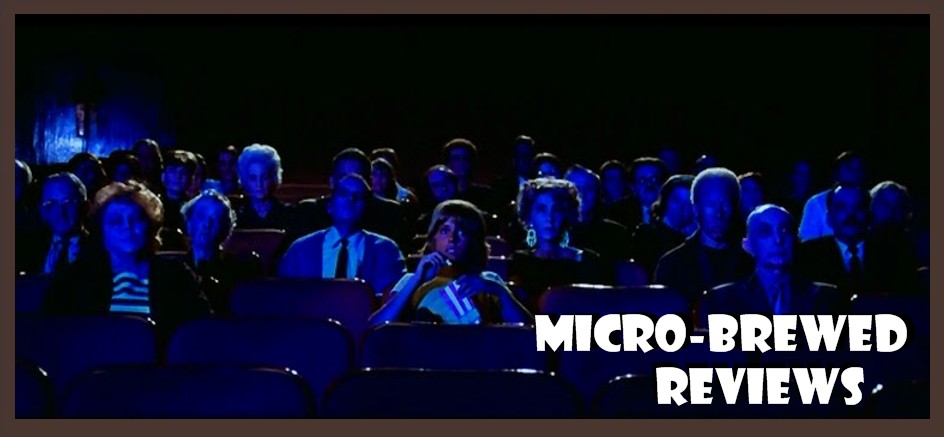After making the seminal horror classic Night of the Living Dead (1968), George Romero tried his hand at other genres but it wasn’t long before he returned to his comfort zone: biting (heh) social commentary via the political film disguised as a horror film with The Crazies (1973).
Romero has always maintained his original zombie movie was a subtle metaphor for the Vietnam War. His follow up film, however, was a far less subtle jab at the very same. It begins when a military transport plane crashes in rural Pennsylvania, which is compounded when the cargo, an experimental bio-weapon (Code-named: Trixie, which also served as the film's later re-release title), is compromised and leaks into the water supply of a nearby town. The toxin was developed as a de-stabilizer that affects the brain, causing it to swell and eventually burst. But before this becomes fatal, those infected show signs of mental instability and are prone to violent outbursts, making them a danger to themselves and others. The long and the short of it: they go crazy. And what can only be described as a grievous oversight on the developer’s part, this weaponized virus has no known cure.
Well aware of this disaster, the United States' government quickly scrambles to contain the situation – stress on the 'scramble'. But a better word might be fumble as the small community is soon overrun by the military, looking like alien invaders in their hazmat suits, who place the town under martial law, forcibly round-up its citizens, both infected and uninfected, and place them in quarantine, where they are processed like cattle in a feedlot. Seems simple enough but we all know our Romero 101, right? Right.
From there, The Crazies narrows its focus to three groups. First is the military, who are trying their best but are constantly hamstrung by the bureaucrats back in Washington who don’t realize how bad the situation truly is and how quickly it is deteriorating with no contingencies in place when the original protocols prove grossly ineffective. Second is a group of conscripted scientists who work to find a cure but are constantly hamstrung by red tape and the lack of promised equipment. And third, we have a group of locals on the run from both the troops and the infected as they try to break out of the quarantine zone.
This being a Romero flick, don't expect a happy ending. Everything that should go right, of course, goes horribly wrong, which snowballs exponentially until the end. A nominal happy ending is within reach, but through some ironic twists ‘n’ turns all hope is lost due to someone's bumbling, which causes a chain-reaction that runs through all three groups and sobers the viewer up considerably by the end.
One could almost describe The Crazies as a comedy of errors, but you just don’t feel like laughing because it all seems a little too real. Like I mentioned earlier, this film is an even more obvious allegory for the Vietnam War than Night of the Living Dead. But while Night was about America's reaction to the war, The Crazies is about the war itself. Even past the obvious images of an infected pastor setting himself on fire, Romero spends most of his ammunition on the politicians in Washington, who are unprepared and ill-equipped with no real plan for the situation they find themselves in and no real chance for victory. Too much time is wasted on protocol; gathering useless information; misappropriation of priorities and resources; and the only course of action that can be agreed on is to just send in more troops.
In contrast, aside from some looting, Romero actually portrays the military itself in a relatively good light. Most of the soldiers don't have a clue as to why they're really even there, and are earnestly trying to help while the command group tries to accomplish the impossible with the hand they're dealt by Washington.
As I re-watched The Crazies for this marathon, I found it funny that Romero’s films have actually become less effective as his budgets increased over the years. I’ve also felt that after the split the rest of Image 10 needed Romero far more than he needed them; and yet, there always seemed to be something missing with Romero’s post-Night efforts; a little something-something that prevents them from reaching the full alchemy of the original Dead. The Crazies is also missing that certain something and it might feel dated and cheap and grounded in the decade that spawned it, but I’ll still take Romero on a shoestring budget any day.

What is Hubrisween? This is Hubrisween. And now, Boils and Ghouls, be sure to follow this linkage to keep track of the whole conglomeration of reviews for Hubrisween right here. Or you can always follow we collective head of knuckle on Letterboxd.
The Crazies (1973) Pittsburgh Films :: Cambist Films / P: A.C. Croft / AP: Margaret Walsh / D: George A. Romero / C: S. William Hinzman / E: George A. Romero / M: Bruce Roberts / S: Lane Carroll, Will MacMillan, Harold Wayne Jones, Lloyd Hollar, Lynn Lowry, Richard France










No comments:
Post a Comment